Digital Signal Processing CGSC433
1/126
There's no tags or description
Looks like no tags are added yet.
Name | Mastery | Learn | Test | Matching | Spaced |
|---|
No study sessions yet.
127 Terms
representation of time and amplitude can be
continuous or digital (discrete)
continuous
continuous line with numbers having a theoretically infinite number of decimal places

digital (discrete)
sequence of separate points; number of decimal places is always limited- no solid line
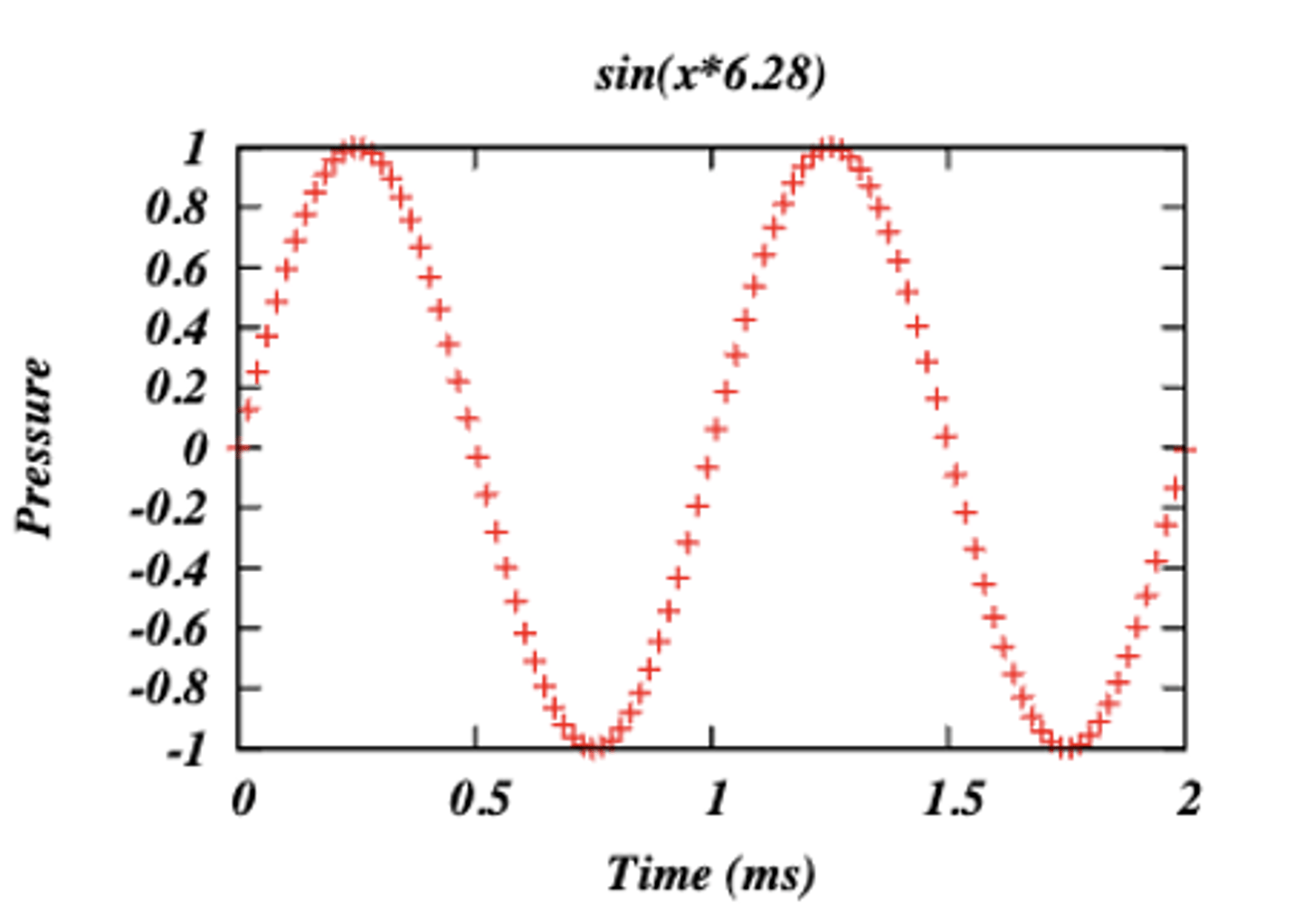
digital devices such as computers can
only store a finite amount of information
no computer can store the exact value of pi because
it has infinitely many decimal places. Computers can only store this number to a certain number of decimal places
two important aspects of conversion
how precisely we measure time-sampling and how precisely we measure amplitude-quantization
sampling is
how frequently we take measurements of the signal in time
sampling interval is quoted as
a frequency
sampling rate (in Hz)
is the number of sampling points (intervals) per second
10,000 samples/sec= 10,000 Hz
10 kHz
the higher the sampling rate
the more accurate the digital approximation
not enough sampling points
not going to resemble the original wave

sampling: high resolution
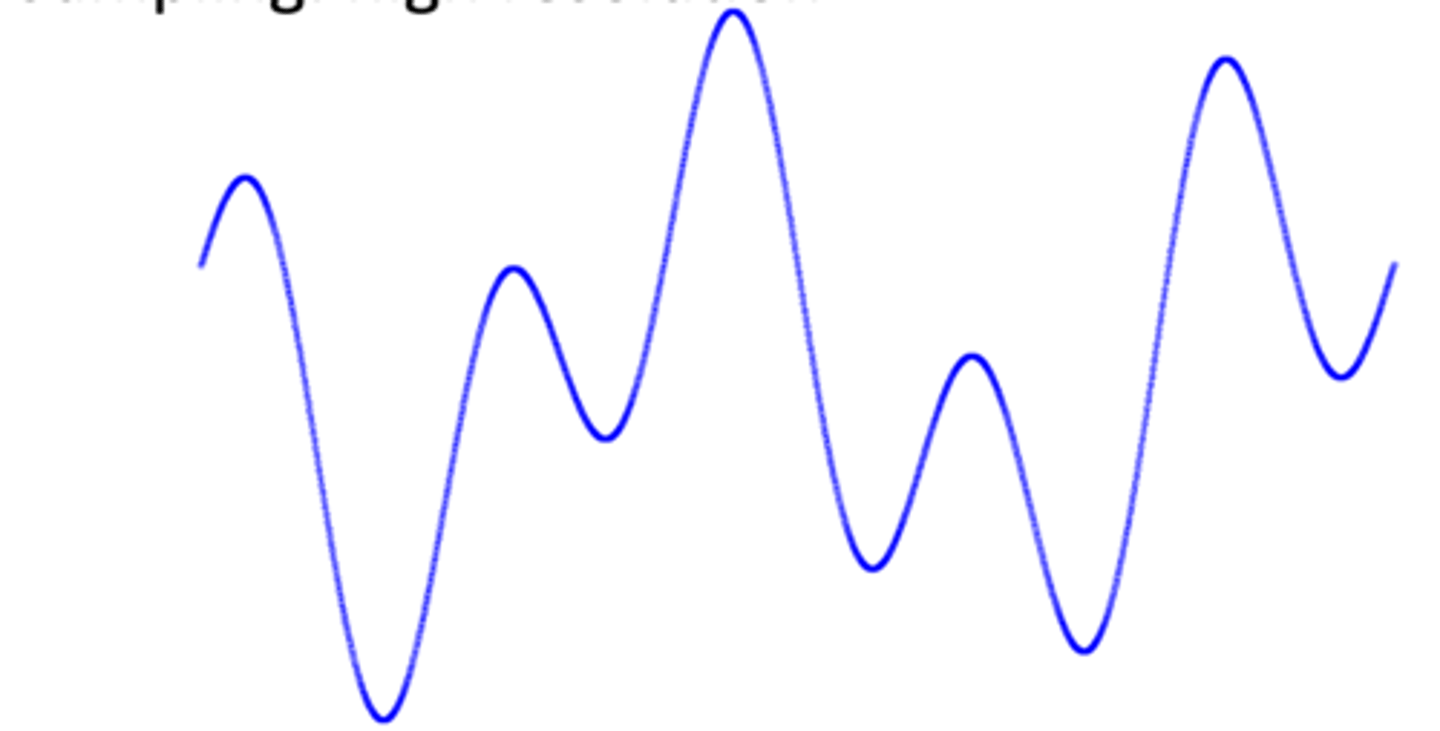
sampling: moderate resolution
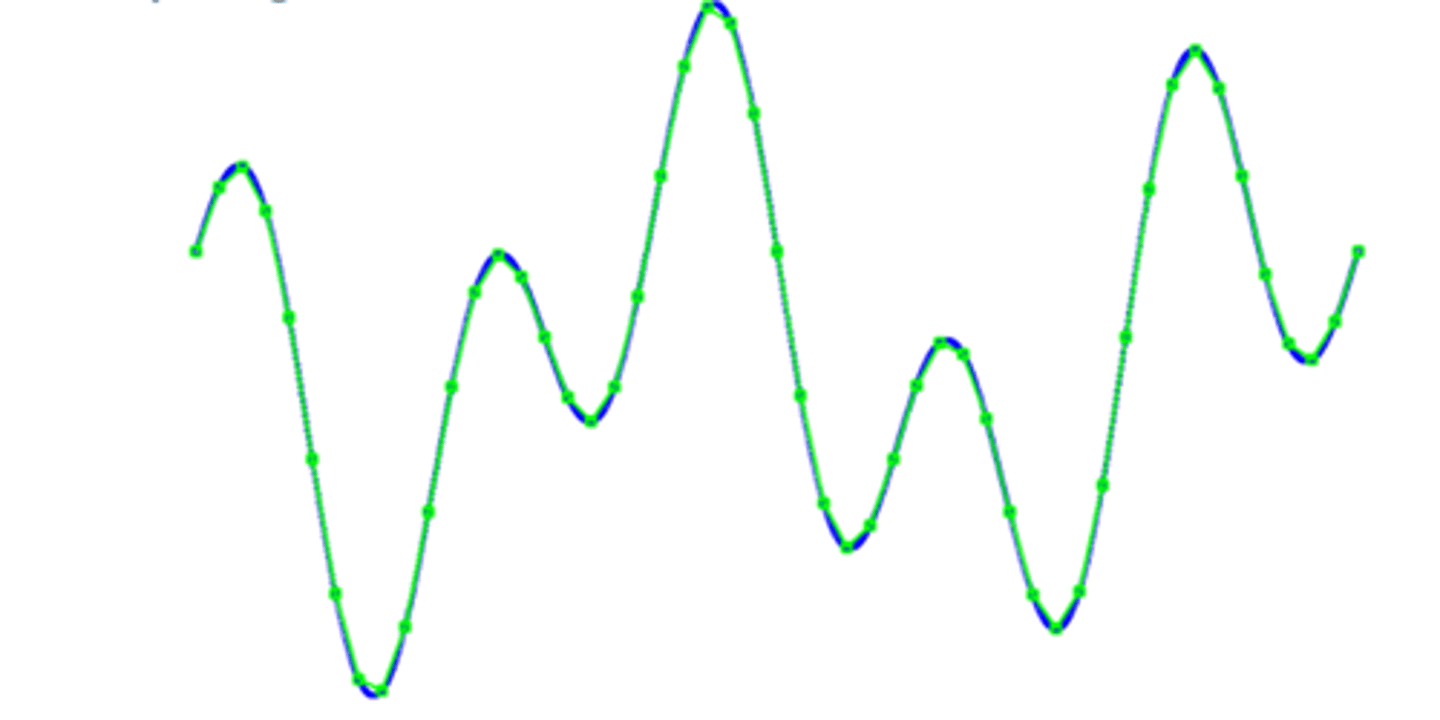
sampling: low resolution
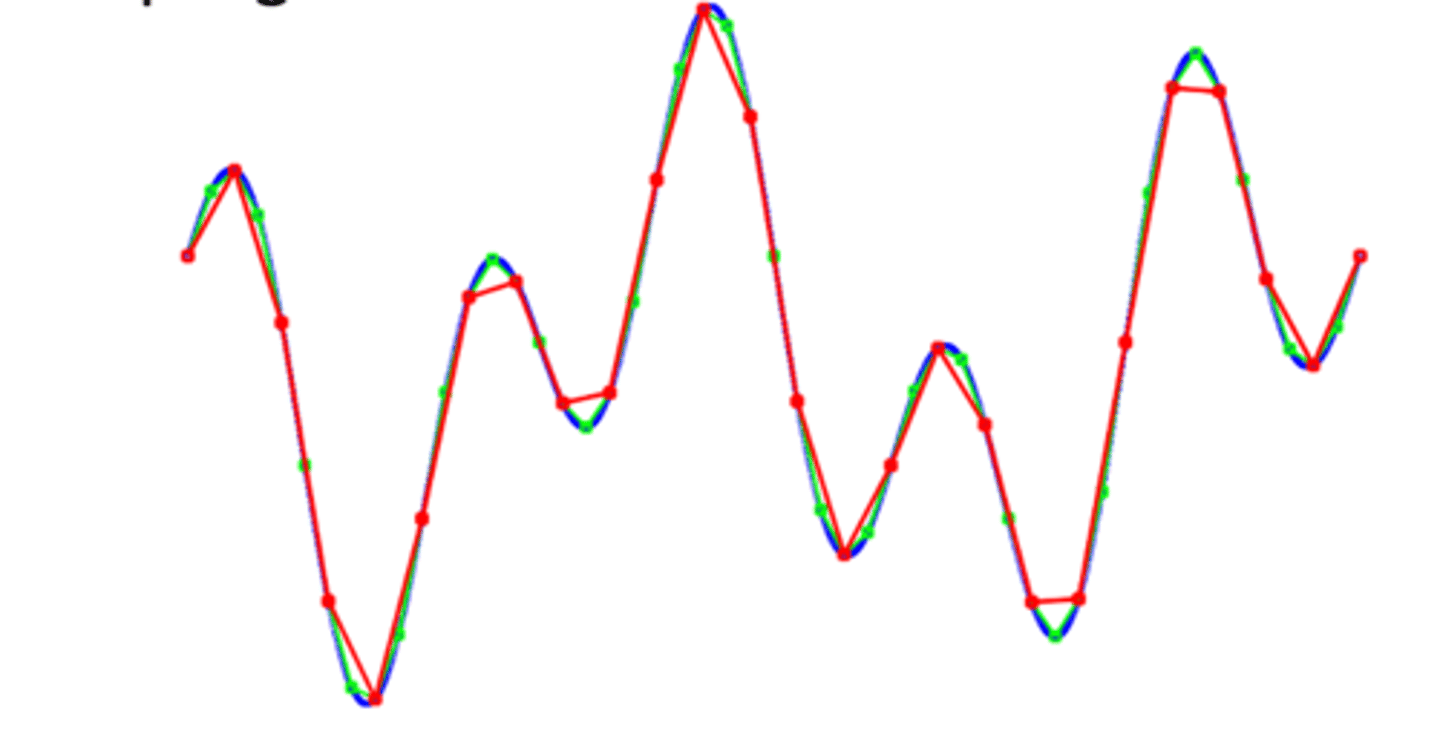
analog devices
can store continuous air pressure variations into continuous electrical signals- computers can't do this
examples of analog devices
tape recorders, vinyl records
on computers signals get stored as
digits-they are digital devices
all acoustic signals in computers are
discrete
analog-digital conversion
1. limit the number of places after the decimal point on the time axis=sampling
2. limit the number of places after the decimal point on the amplitude axis=quantization
sampling rate
# of times per second that we measure the continuous wave in producing a discrete representation of signal
the signal must be sampled
often enough so that all important information is captured
to capture a 100 Hz periodic wave you need
at least 2 samples per cycle--> 200 samples per second
nyquist frequency
highest frequency component that can be captured with a given sampling rate
the nyquist frequency is
1/2 the sampling rate
two sampling rates. A. a low sampling rate that distorts the original sound B. a higher sampling rate that closely approximates the original sound wave- 4 cycles
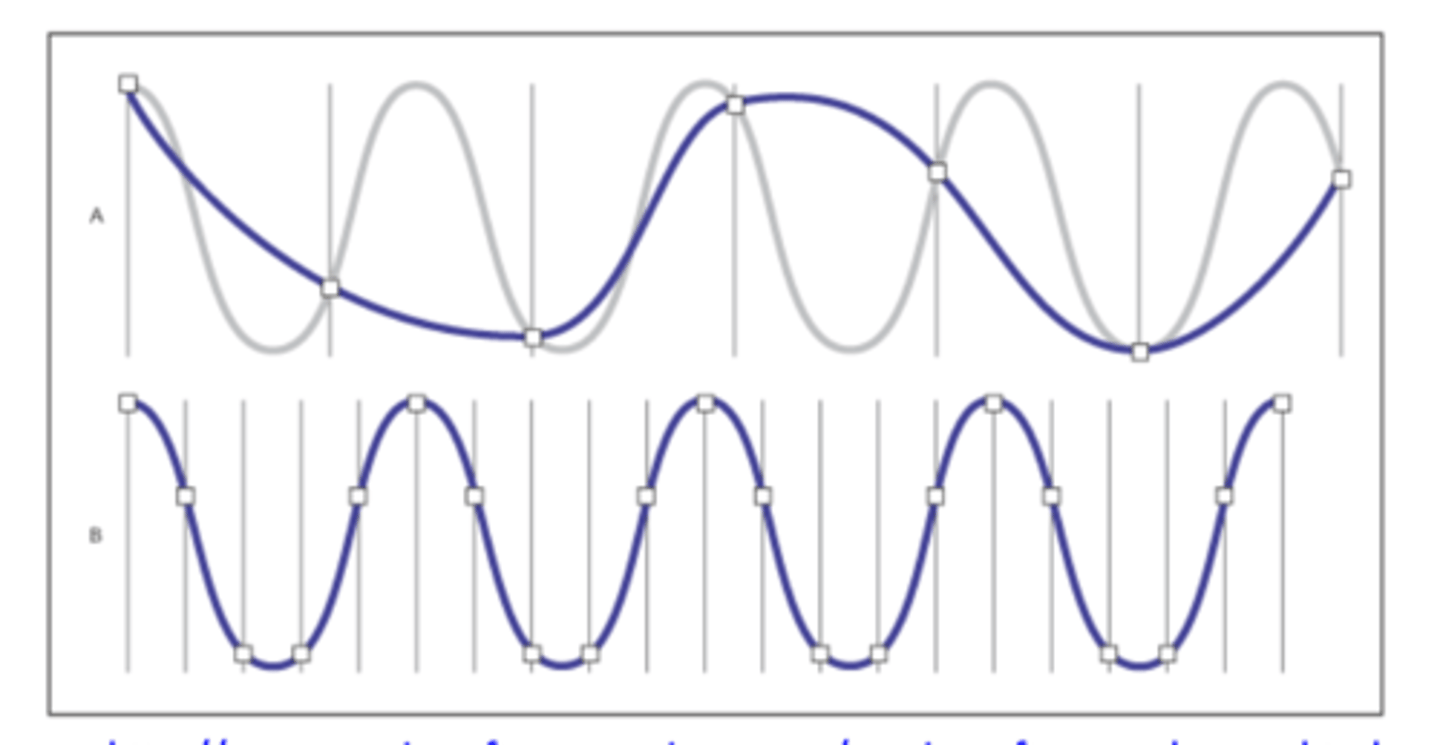
using .5 ms is
very beneficial
if we take samples less frequently
it is not capturing the information well
if continuous signal contains frequency- nyquist frequency
the sampled waveform will have a completely different frequency from that in the original continuous signal-misrepresentation-aliasing
misrepresentation is called
aliasing
to avoid aliasing we can
increase the sampling rate and filter out high frequencies
traditional 20 kHz sampling rate
for speech: any component with a frequency >10kHz will not be captured, BUT it will introduce alias components into the discrete signal
anti-aliasing
it is always necessary to use low-pass filters to block out high frequencies
how to find the cutoff frequency of an anti-aliasing filter
it is half the sampling rate- 16,000Hz/2=8,000 Hz- same thing as nyquist frequency it is HALF
what rate should we sample speech at?
it depends on what we are going to use the recordings for!
the highest frequency that young ears can perceive is
20kHz, so to ensure that all perceptible frequencies are represented, we must sample at 2x20kHZ=40kHz
most of the information relevant to distinguishing speech sounds is
below 10kHz, so high quality speech sound is still obtained at 20kHz sampling rate
for vowels most of the relevant information is below
5kHz, so we can get away with a sampling rate at about 10kHz for analyzing just vowels
energy in fricatives is
higher requiring a sampling rate around 16-20kHz
phones including cell phones have a sampling rate of
8 kHz
quantization refers to
how finely we chop up the amplitude scale
the continuous amplitude scale is divided into
a finite number of evenly spaced amplitude values
the higher the quantization rate
the more accurate the digital approximation
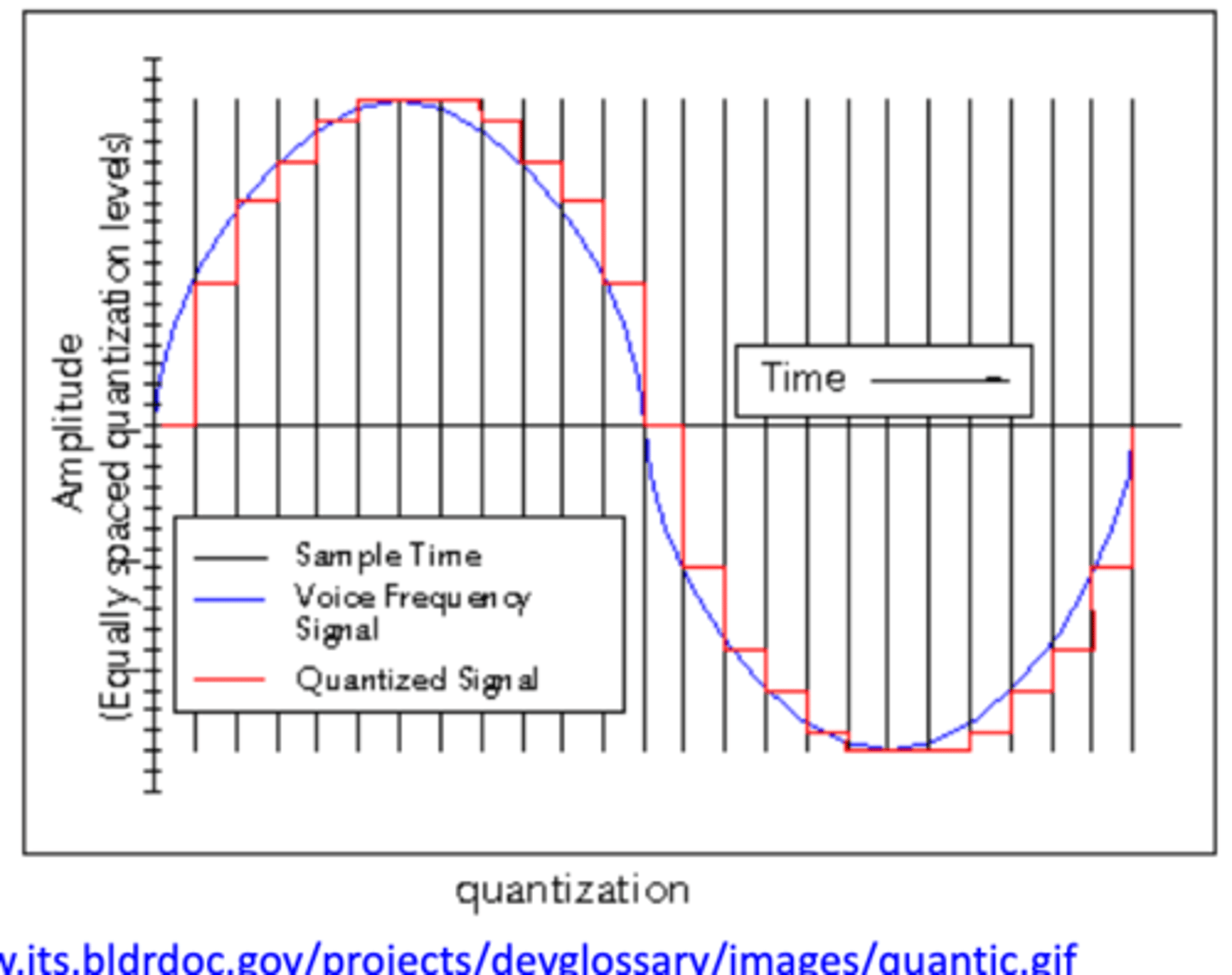
digital numbers
computer world, limited choices, discrete values
computers handle integers (1,2) better than
decimals (0.01, 0.02 etc.)
acoustic waveforms are stored as
sequences of integers
size of integer
determined by the number of bits (binary digits) used
the larger the number of bits
the greater the amplitude resolution
speech encoding
8, 12, 16 bit quantization
quantization rate is quoted in
bits
a bit can either be
0 or 1
with 1 bit we can only represent
two numbers, 0 or 1
with two bits we have
four possibilities: 00, 01, 10, 11
generally using n bits we can represent
2^n levels of amplitude
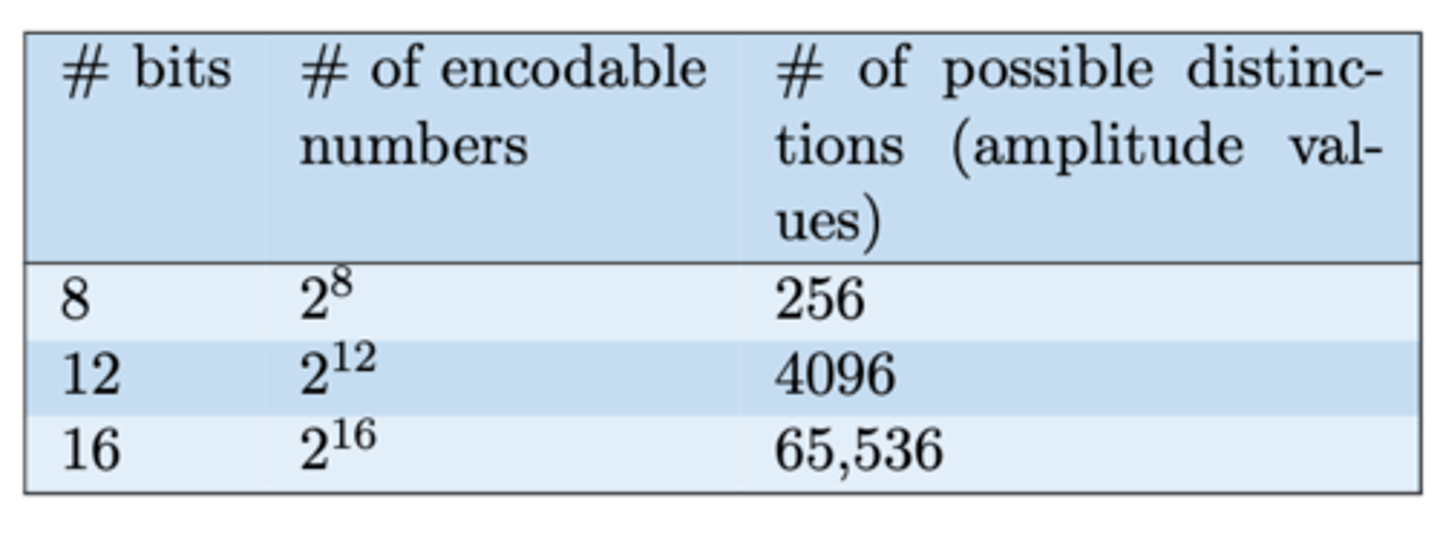
8 bits, 2^8 encodable numbers
256 possible distinctions (amplitude values)
12 bits, 2^12 encodable numbers
4,096 possible distinctions (amplitude values)
16 bits, 2^16 encodable numbers
65,536 possible distinctions (amplitude values)
2 bit resolution with
4 levels of quantization
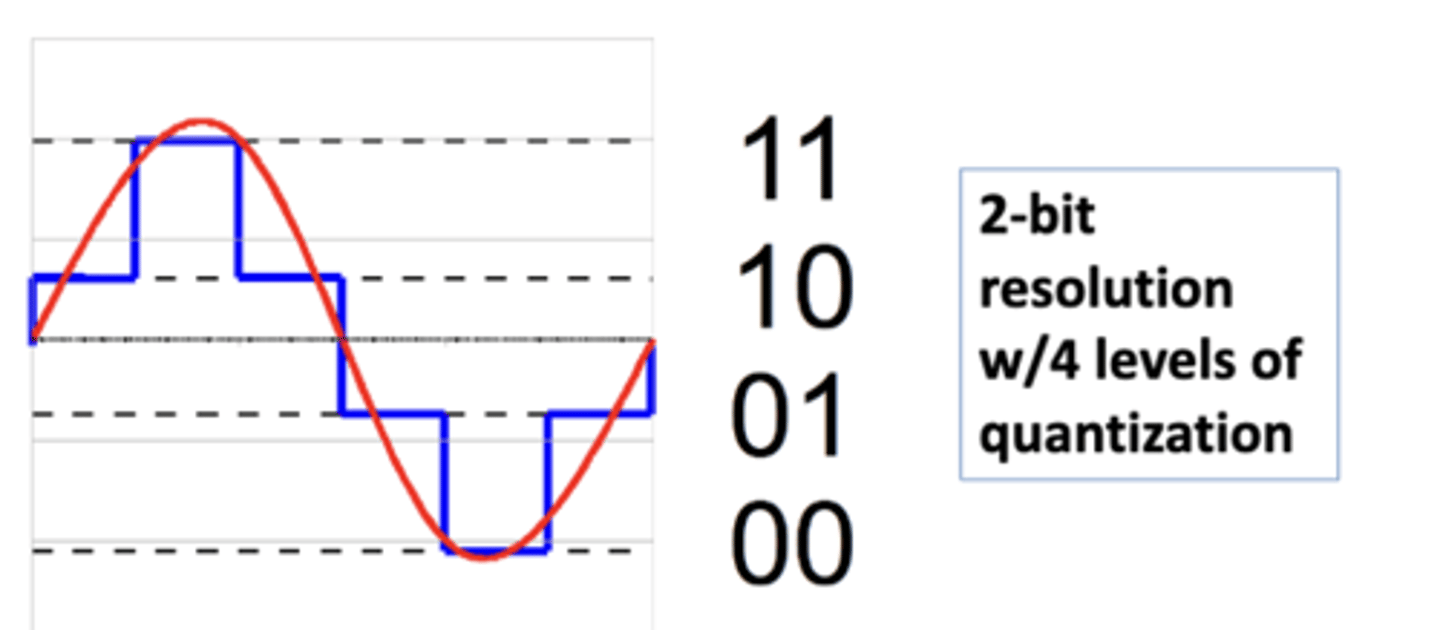
3 bit resolution with
8 levels of quantization
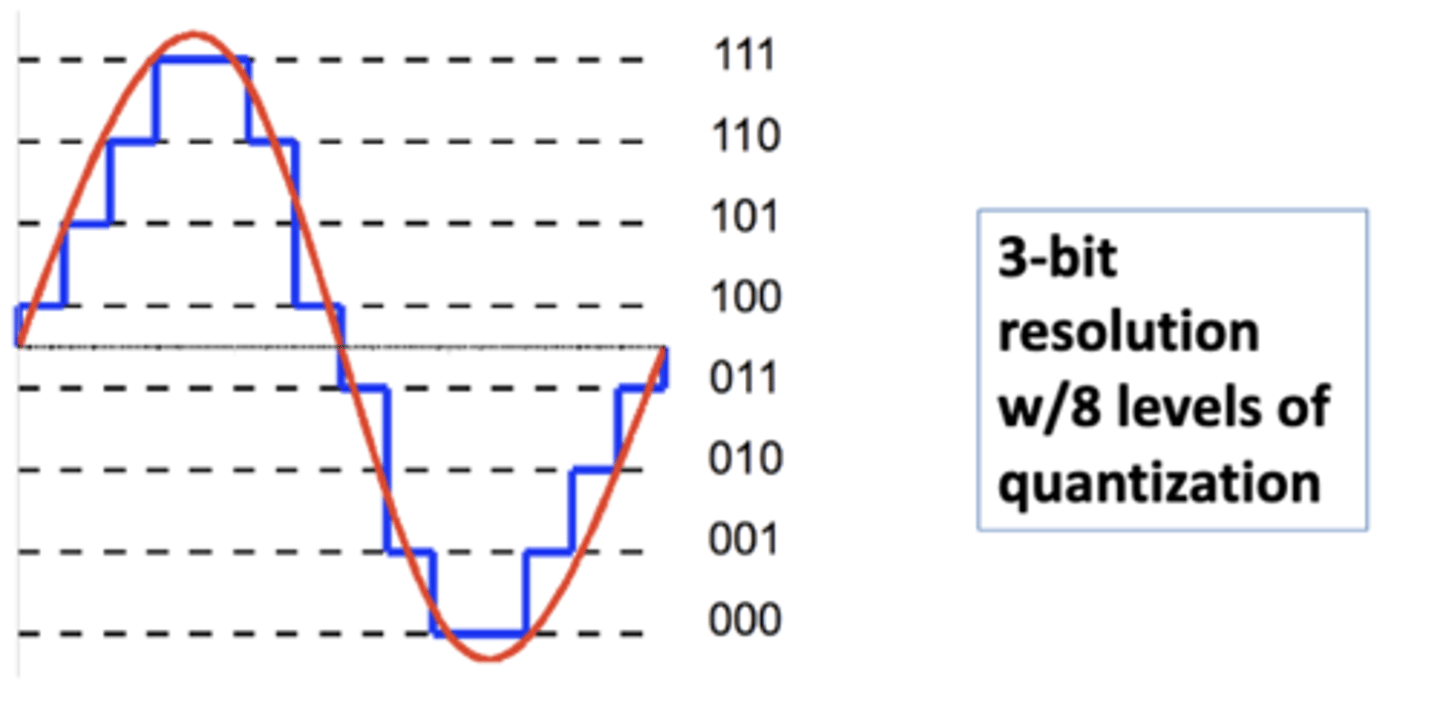
the act of quantization introduces
some error into the signal, which is called quantization noise
quantization noise
error in the signal
quantization noise is
the difference between the actual amplitude of the analog signal and the amplitude of the digital representation
subtract red from blue and get the graph below
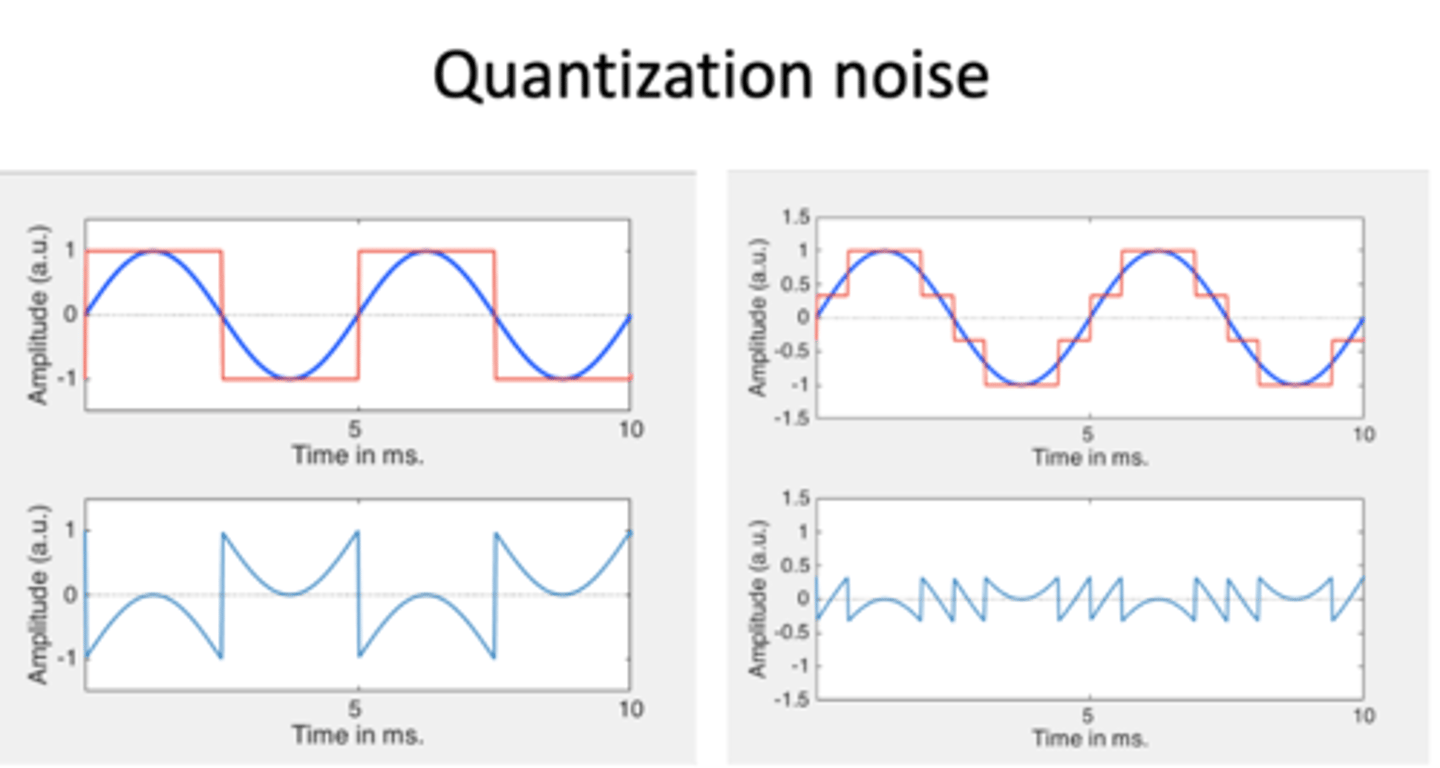
too much noise
affects the way the sound is
the relative loudness of quantization noise is called
signal-to-noise ratio
smaller ratios mean
the noise has a bigger effect
larger ratios mean
the noise has a smaller effect
signal-to-noise ratio is typically expressed as
a ratio from number of possible amplitude steps to 1; for 16 bit quantization: 65,536:1
noise has a smaller effect for
65,536:1 than for 4,096:1 (12 bit)
the ratio is the best possible in principle given the
level of quantization
if the amplitudes in the actual signal do not make use of the full range of values
the actual signal-to-noise ratio may be smaller
how many amplitude steps can be represented if we are using 10 bits?
2^10=1024
what is the maximum signal to noise ratio of 1024 amplitude steps/bits?
1024:1 (number of amplitude steps/bits to 1)
when recording
you are supposed to keep the signal amplitude as high as possible- you are supposed to keep the bar in the green zone without going into the red zone
red zone
clipping
keeping within the green zone
keeps the actual signal-to-noise ratio high (so the quantization noise has a smaller effect) because you are using the full amplitude range
techniques for investigating digital signals include
digital filters, autocorrelation, RMS amplitude, Fast Fourier transform, linear predictive coding, and spectrograms
digital filters
removes low or high frequency components from the signal
autocorrelation
tracks pitch changes over time
RMS amplitude
measures acoustic intensity (loudness)
Fast Fourier Transform (FFT)
decomposes complex waves into their single component parts
linear predictive coding
allows examination of broad spectral peaks
spectrograms
shows spectral changes over time
we can construct a low pass filter by calculating the
moving average- this eliminates the high frequency bumps- the signal is transformed to preserve lower frequency components
longer windows will create
smoother signals, but with worse time resolution- not being able to see changes over time very well because they have been smoothed over
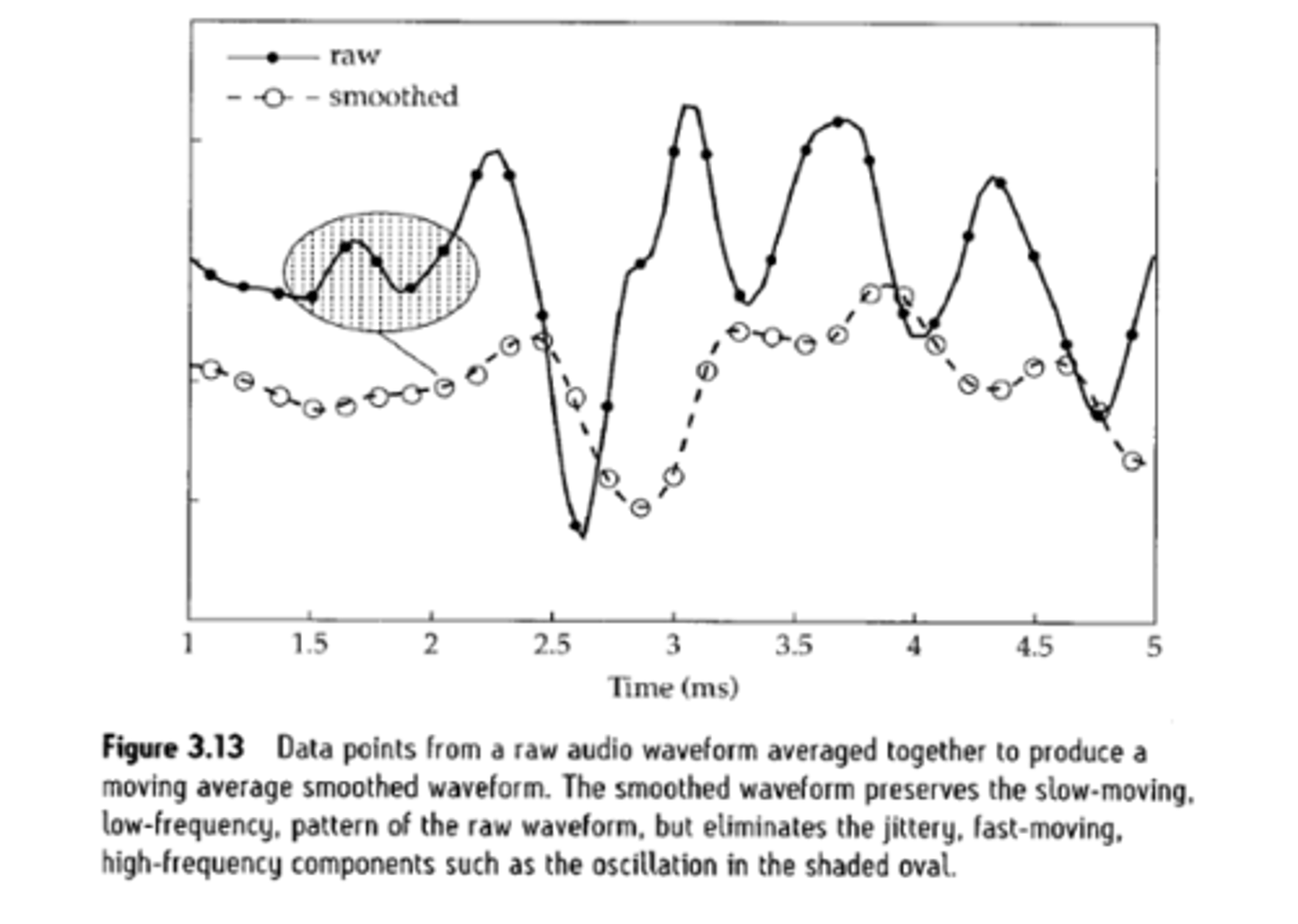
when we speak our F0 is always
changing at least slightly
there are many methods to tracking fundamental frequency over time, one of which is
autocorrelation
tracking fundamental frequency- the idea is to pick some interval of the speech signal, make a copy of it and then
1. shift the copy of itself over by 1 sample and see how well the copied interval correlates with the actual wave
2. then shift it by 2 samples and check the correlation
3. then shift it by 3 etc.
4. after some predetermined number of shifting, stop and choose the best correlation
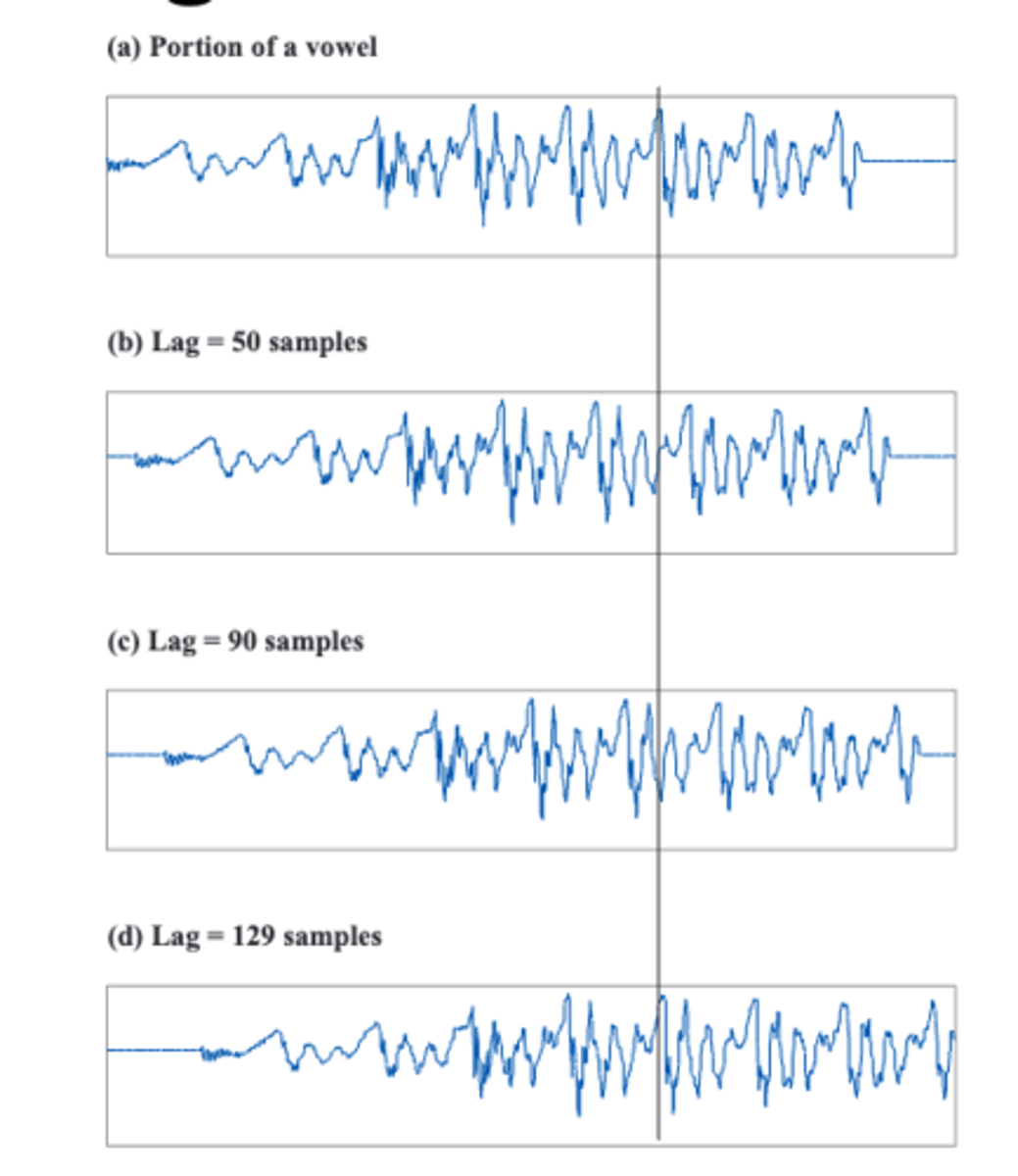
when shifting the interval by 50 and 90 samples
the lag doesn't correlate well with the original
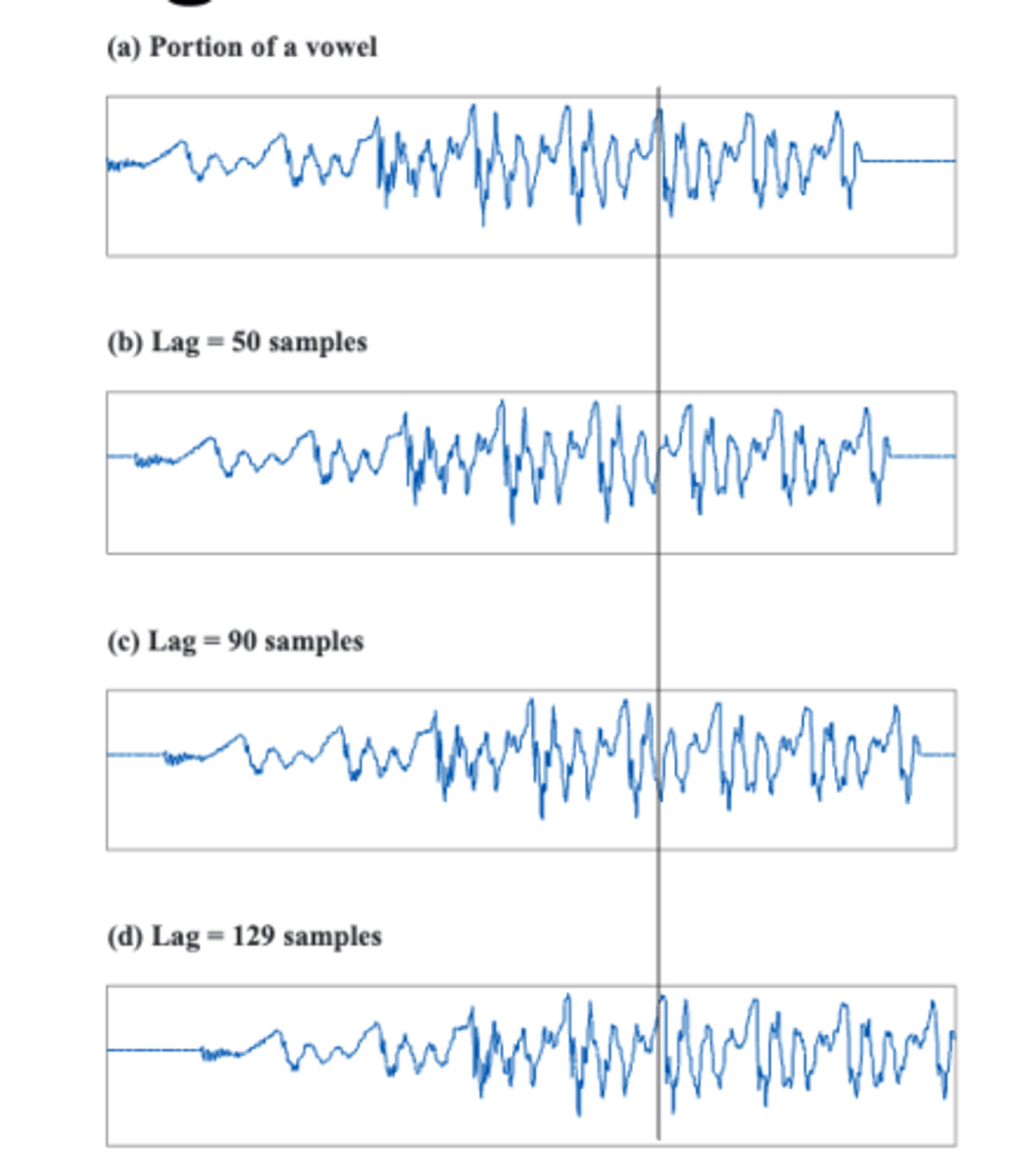
shifting by 129 samples gives
the best correlation, the lag duration is our best guess of the period of the wave
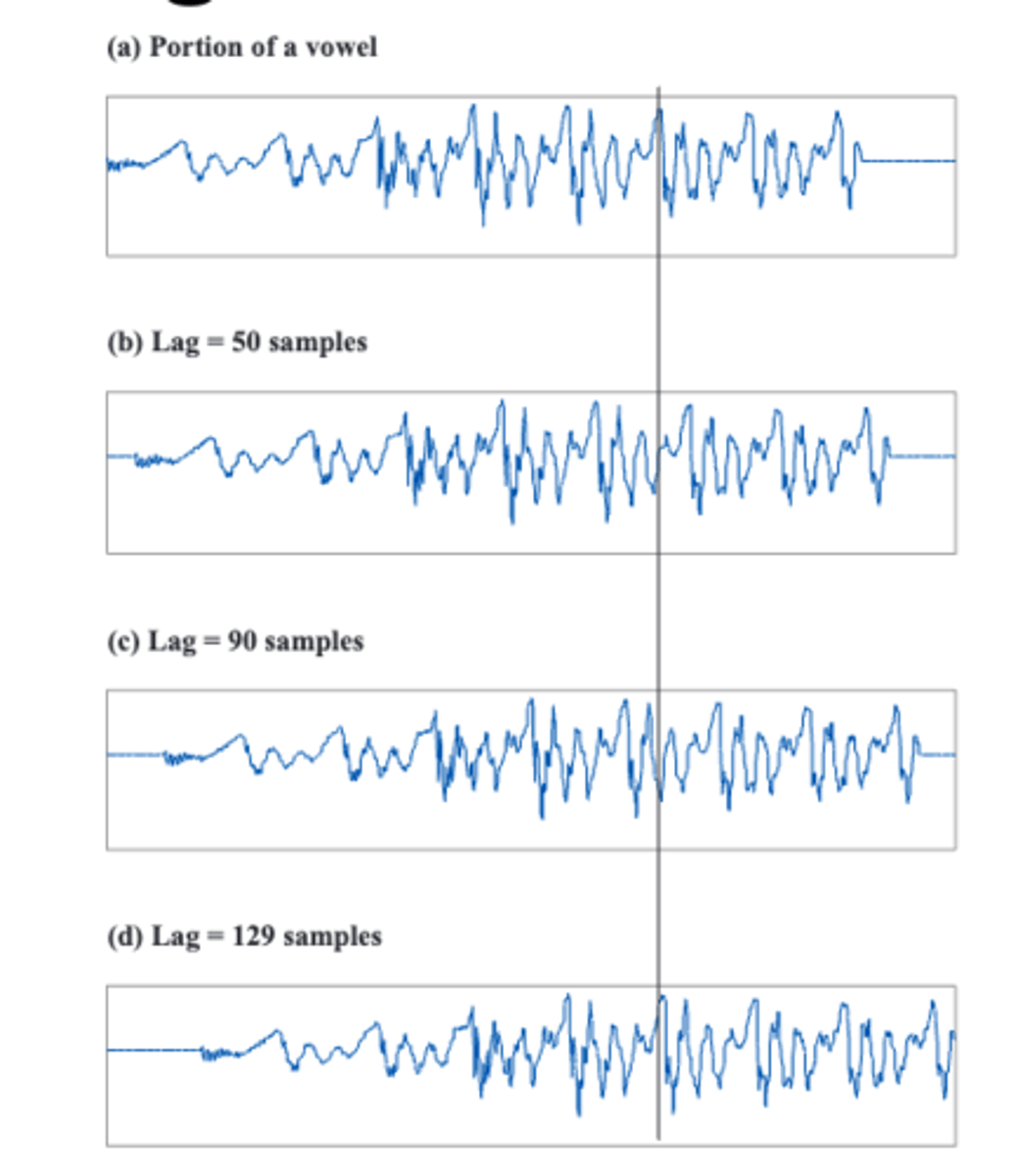
since the sampling was done at 16,000 samples/s (16 kHz) we calculate the F0 by
129/16000 gives us the length of the lag duration in seconds0 the period so its inverse 16000/129 is the frequency=124.031 Hz
in praat the possible frequency range is
75-500 Hz these frequencies determine the minimum and maximum possible lag durations
potential problems with autocorrelation
pitch doubling and pitch halving
pitch doubling
occurs when one cycle of the waveform has two halves that look roughly the same and the autocorrelation method mistakes them as separate cycles
when pitch doubling happens
it tracks the pitch as double the actual value

pitch halving
occurs when alternating pitch periods are more similar than successive periods and the autocorrelation method mistakes two adjacent pitch periods as part of the same cycle
when pitch halving occurs
it tracks the pitch as half the actual value
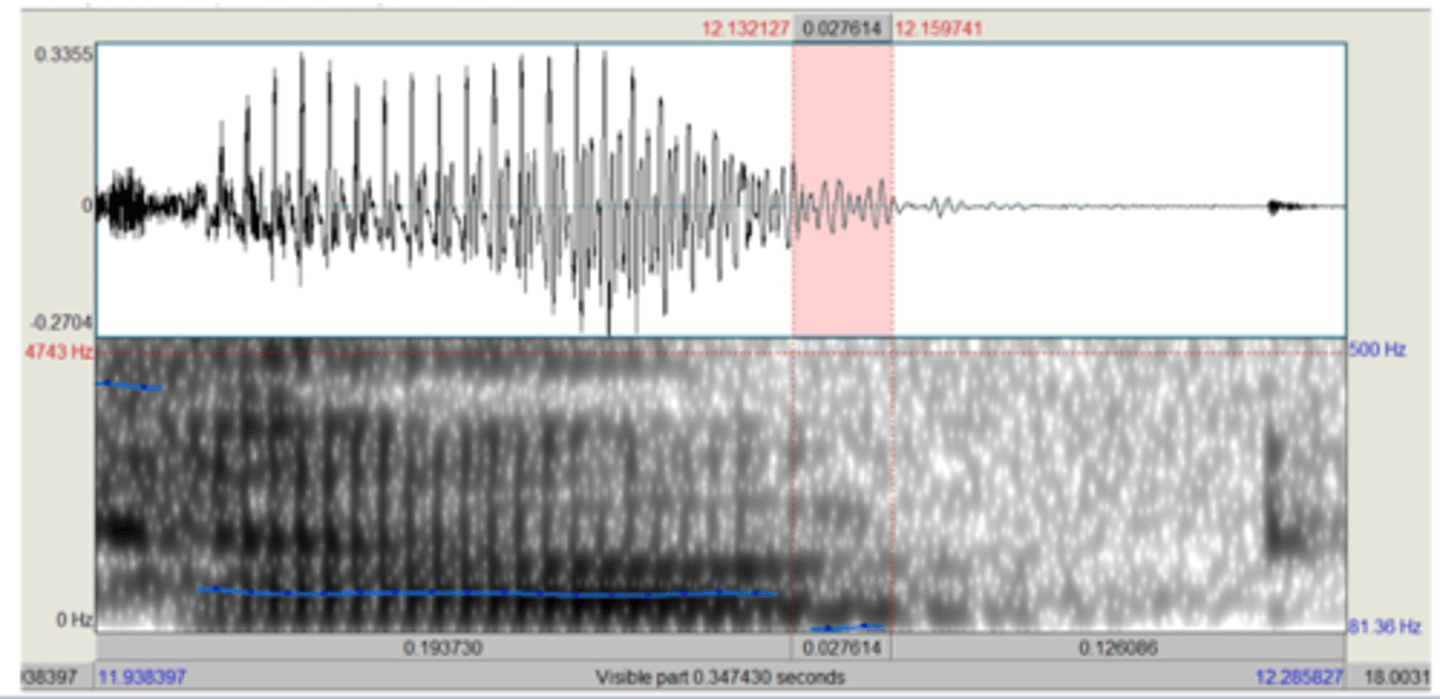
Root Mean Square (RMS) amplitude is
a measure of the energy in a complex wave
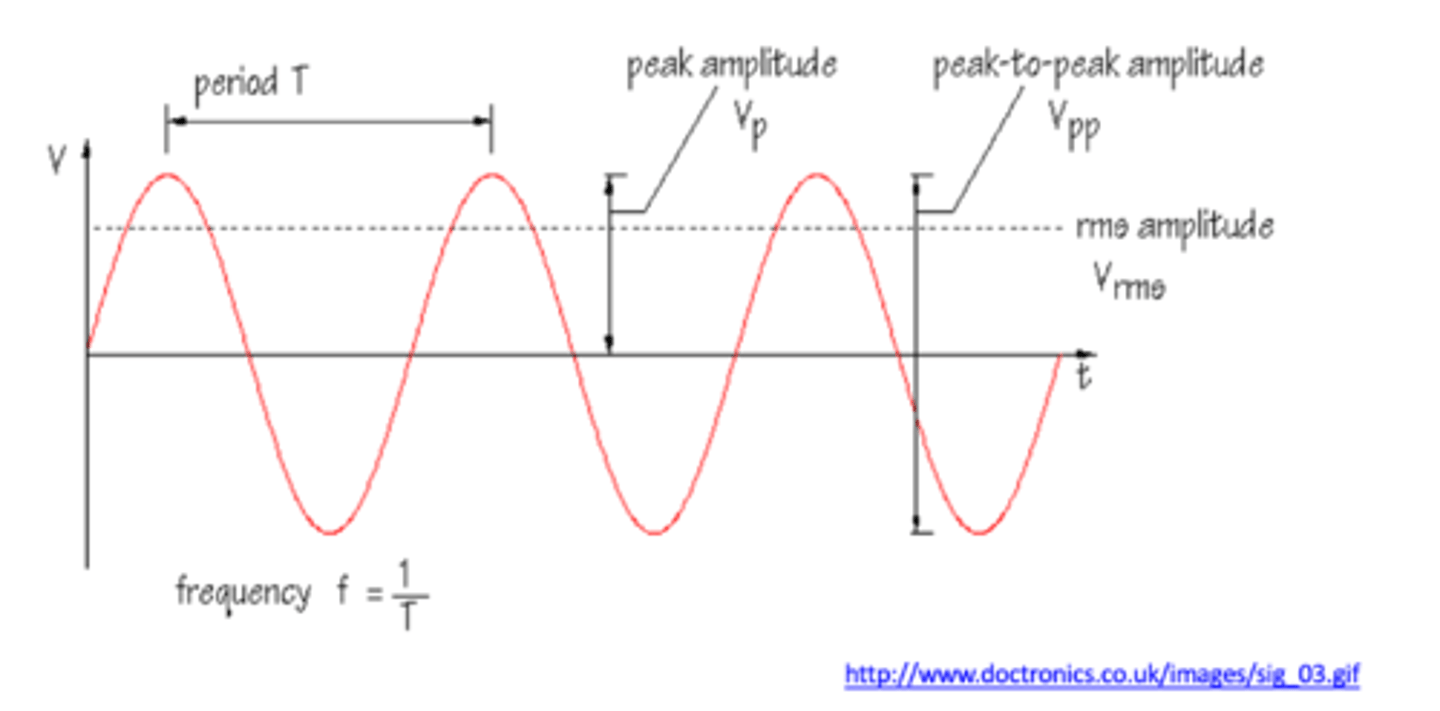
RMS amplitude calculates
the average amplitude over time
RMS amplitude more closely correlates to
perceived loudness than raw amplitude does